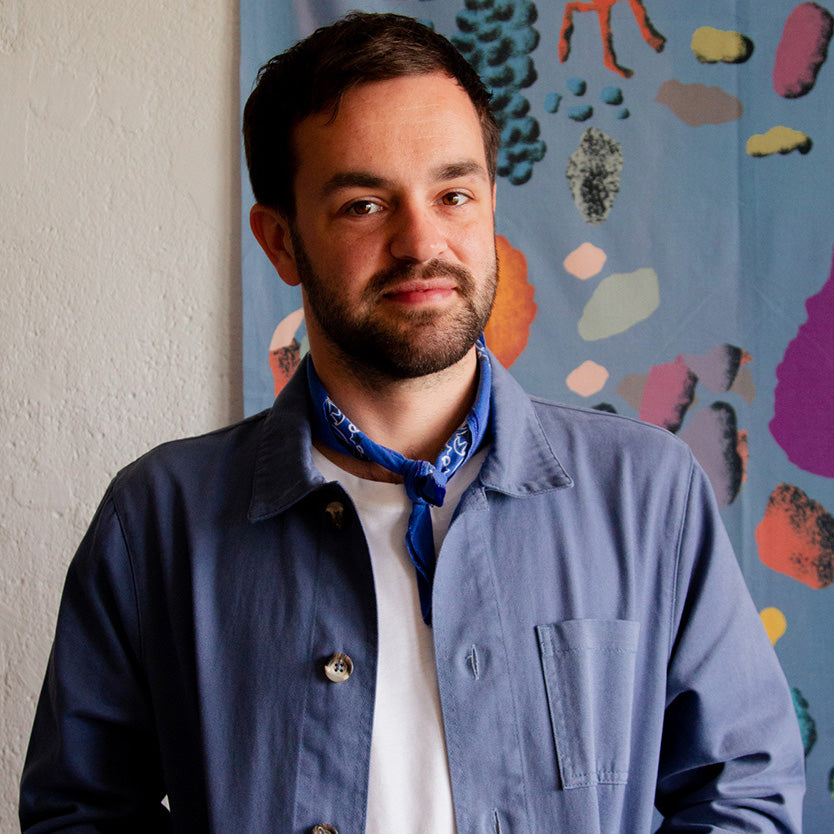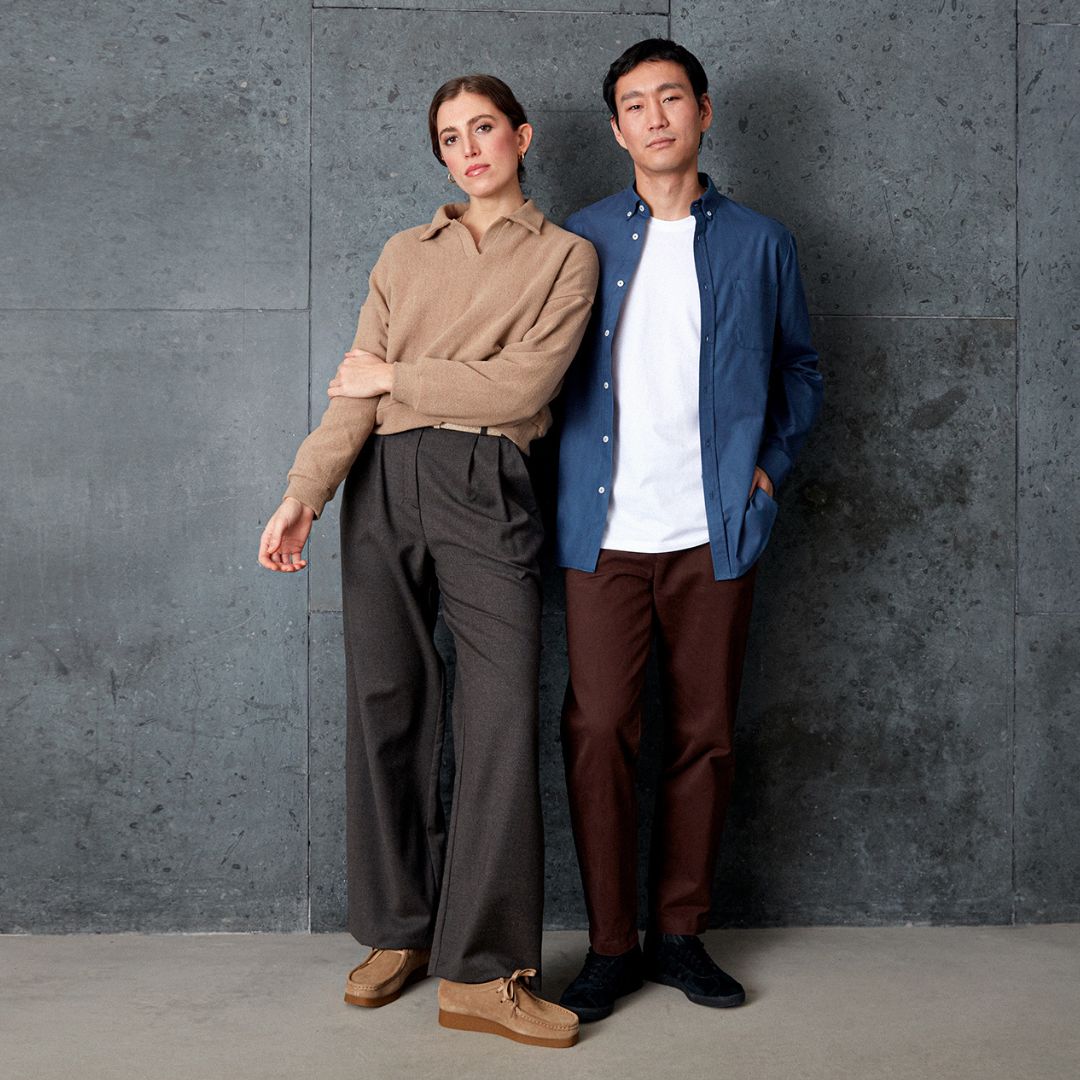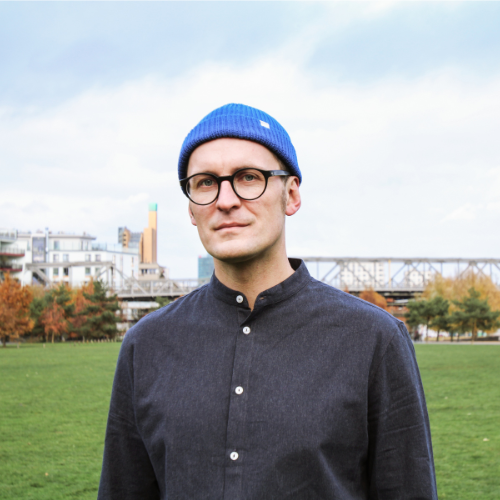Community and Digital Craft in Kreuzkölln
mit Afra Hackl von rahrah studios
For Afra Hackl, designer and founder of the jewelry label rahrah, daily life unfolds within a small radius—everything in the same neighborhood, Kreuzkölln. Her apartment, daycare, playground, creative network, co-working space, and jewelry workshop are all in close proximity, enabling spontaneous decisions and passionate participation in her surroundings. Afra especially appreciates this scale and freedom as a mother. As a native of Munich, she knows that Berlin still stands out as an exception. With great respect for her community, she, together with her partner and child work daily on a balanced, sustainable lifestyle.
Her journey as a designer began during her studies in Bolzano when she first encountered 3D printing. This encounter inspired her to experiment with modular design, question the pros and cons of technology and industrialization, and ultimately develop a process that today ensures her independence from producers and supply chains. In true Berlin fashion, Afra combines this approach, which she calls "digital craft," with the ability to work directly on the product and add a personal touch often lost in mass production.
We visited Afra at Velt Studio to learn more about her journey. From there, we accompanied her on her daily route and took a walk through Hasenheide to her favorite spot on Tempelhofer Feld.

I thought: "Okay, I actually have all the resources. I have a studio space. Let’s give it a try."
Givn Berlin: Wie lange arbeitest Du schon hier im Velt Studio?
Afra: Ich bin schon richtig lange hier. Seit 2017. Das Schöne hier ist, dass es super durchmischt ist, also es gibt hier Leute, die “brainwork” machen, aber auch solche, die wirklich Sachen bauen, schneidern und so weiter. Das ist eine sehr, sehr große Bereicherung.
Givn Berlin: What inspired you to experiment with modular design and found rahrah?
Afra: Ich habe tatsächlich als Studentin damit angefangen, in Bozen. Dort bin ich zum ersten Mal mit 3D-Druck in Kontakt gekommen – wir hatten da richtig große Maschinen und 2012 kamen diese ersten Desktop-3D-Drucker raus. Mein Vater hat mir einfach einen geschenkt. Das war völlig überwältigend. Er hatte geerbt und hat mir zum Geburtstag einen hingestellt.
Kurz darauf habe ich eine Residency in Portugal gemacht und eine Kette aus Keramik modelliert. Die Porzellan Manufaktur dort wollte sie unbedingt verkaufen, aber die Herstellung wäre zu teuer geworden, wegen der Handarbeit. Der Prototyp allerdings war so überzeugend und bold. Und ich hatte schon zwei Drucker hier stehen. Ich hatte Material und dachte mir: “Okay, ich habe eigentlich alle Ressourcen. Ich habe einen Studioplatz. Lass mal probieren.”

Pullover ARIA

"Ultimately, spontaneity is what makes the difference compared to the mass production process."
Givn Berlin: Und wie können wir uns den Design- und Produktionsprozess vorstellen? Ist es wirklich eine One-Woman-show?
Afra: Ja, one-woman und 4 Roboter/Maschinen. das ist ein ganz anderes, abgefahrenes Gefühl, das ist fast wie Ernten. Man drückt eine Taste kommt drei, vier, sechs Stunden später wieder und hat eigentlich ein fertiges Produkt, was man nur noch zusammenstecken muss. Und das ist auf so eine absurdeArt und Weise spannend, weil es ja das Versprechen der Industrialisierung gewesen ist, dass wir alle irgendwie weniger arbeiten müssen und die Maschinen uns die Arbeit abnehmen. Aber Pustekuchen, die meisten Menschen fühlen sich heute ja eher von Maschinen bedroht in ihrer Profession. Für mich erfüllt sich das aber mit dieser Arbeitsweise gewisser maßen. Heute verbinden wir das direkt mit Massenproduktion, aber ich würde mich eher im Handwerk verorten und nenne das hier auch gerne “digital craft”. Auch allein die Zeit, die ich da brauche, eignet sich eben nicht für Massenproduktion, sondern eher besser für individualisierte Produkte.
Givn Berlin: Was verbindest Du mit diesem Begriff, “craft”, Handwerk?
Afra: “Craft” heißt ja nie, ich habe eine Idee, gebe sie an einem Marketingteam weiter, wo sie gefiltert wird und an eine große Produktion weitergeleitet wird, sondern “craft” heißt immer, die Künstlerin, der Künstler, hat die Hand am Produkt und kann unmittelbar eingreifen. Im Handwerk bleibt derProzess bei der Person oder bei den Schöpfern. Die Spontanität ist dann im Endeffekt das, was den Unterschied macht zum Massenproduktionsprozess.
"And of course, it’s a balancing act between "How much do I need to worry because the revenues aren’t in the millions?" and "How much do I gain in terms of quality of life?"
Givn Berlin: Wie bringst Du die vielen Aufgaben, die als Mutter anfallen, und die Arbeit als Designerin unter einen Hut?
Afra: Ich gehöre zu den Glücklichen, die einen wirklich fifty-fifty involvierten Lebenspartner haben, was mir ganz viele Dinge ermöglicht und es mir auch einfach schon mit einem neun Monate alten Kind ermöglicht hat, zwei Tage die Woche wieder ins Studio zu gehen. Dabei bin ich auch sehr klar in meiner Entscheidung mit weniger Geld zu leben und dafür mehr Zeit mit dem Kind zu verbringen, aber auch das muss man können. Und natürlich ist es ein Balanceakt zwischen: „Wie viel Sorgen muss ich mir machen, weil die Umsätze nicht in Millionenhöhe sind?“ und „Wie viel Gewinn habe ich davon an Lebensqualität?“
Givn Berlin: Was würdest Du Künstlern in ähnlichen Situationen raten? Also Menschen, die ein eigenes Projekt ins Leben rufen wollen, aber auch eine Familie planen, oder schon eine Familie haben?
Afra: Das, was mich dazu gebracht hat, das zu tun, was ich tue, nämlich kreativ zu sein und Künstlerin zu sein, ist die Tatsache, dass ich in der ganzen Zeit meiner Schwangerschaft, während der Pandemie und der Geburt eines Kindes immer diesen Co-Working-Space behalten habe. Auch wenn ich nur einmal in der Woche dorthin gegangen bin, war es eine Rettung. Dieser Ort hat nicht nur geistig, sondern auch körperlich einen Raum für mich, mein Handwerk und meine Kunst dargestellt. Und es war ein riesiger Luxus. Ich meine, es ist nicht wahnsinnig teuer, es ist immer noch in Ordnung. Aber in Zeiten der Pandemie war es ein großer Teil des Geldes, und eine Abschaffung die wir besprochen haben.
At the same time, this place allowed me to stay in touch with so many different lifestyles. Not just hanging out with other parents at the playground all the time but also maintaining connections with people who are 24 years old and party a lot, or with people over 40 from the LGBTQI community who do something entirely different, don’t plan to have children, and have a different view of the world.
"I believe success is being able to live simply without worrying."
Givn Berlin: Was ist das Wichtigste, was Du als Gründerin und Mutter von Berlin gelernt hast?
Afra: Die Stadt Berlin ermöglicht durch ihre Struktur den Lebensstil, den ich vorhin angesprochen habe, Zeit für sein Kind zu haben und auch etwas zu unternehmen. Sowie die Möglichkeit, sich für ein Leben zu entscheiden, in dem man nicht viel Geld verdienen muss, um zu überleben. Denn wenn ich in meiner Heimatstadt München wäre, wären die Aussichten völlig anders.
Givn Berlin: How do you understand success in this regard and as an artist? And what would your own definition be?
Afra: I believe success is being able to live simply without worrying. Wealth is not having to think every month about how to cover certain things. And for me personally, it has to do with staying in motion. That new things keep happening, but always assuming that this security is there. Do I have enough for my rent? Do I have something to eat? Can I afford to go on vacation? If all these things are there, you also have the opportunity to discover new things. I think that is a success scenario for me.
Next Story
"At Work"
In Conversation with Mickey Mouse
To make your blog an effective sales machine, integrate your product into your content in a way that doesn’t scream BUY, BUY, BUY. Here are five steps to provide relevant information and eye-candy to lure readers in and help convert blog posts to sales receipts.
Images: Mick Rock
Words: Theo Adorno

Many companies spend lots of resources and effort to create a blog that supports their business, particularly the sales process. Yet many corporate bloggers complain that while blogs contain relevant information and attract visitors, they can’t track how their blog has influenced sales. Social media has raised customers’ expectations about the information they need before they purchase. If your blog content is relevant to prospects’ and customers’ needs before and after purchase and your products deliver on their promise, you can convert your blog into a sales machine.
3 cs of using your blog to sell
Content. Provide useful, educational and entertaining content. Present information based on your product offering and customers’ problems or needs.
Context. While your end goal is to sell, consider the context of your blog posts. Here, you’re a tour guide through your firm’s extended offering – not an auctioneer. Your job is to show readers how to use your firm’s products.
Commerce. Once you’ve given your readers useful information in a meaningful setting, they may be interested in actually plunking down their credit card. Unfortunately, here’s where many business blogs stop. Blog editors, familiar with their company’s e-commerce site and how to find specific products, can assume readers innately know how to find the product or have the motivation to track it down. Don’t get me wrong. Some very small percentage of prospects will to go extreme efforts to find the product. Unfortunately, the rest will just leave or worse go to your competitor.
Ways to convert your traffic to sales
To make your blog an effective sales machine, integrate your product into your content in a way that doesn’t scream BUY, BUY, BUY. Here are five steps to provide relevant information and eye-candy to lure readers in and help convert blog posts to sales receipts.
Provide useful, relevant information. Show prospects how to use your product, give them instructions or how-tos, and/or entertain them.

Showing making procedure is a good way to guarantee product quality
Include a variety of different forms of content. Photographs and videos are particularly important because readers tend to be visual and want to see your product in action.


Get customer attention by clean visual and video
Make it easy to buy by eliminating stumbling blocks to purchase. Don’t assume customers know which item you’re talking about in your post. Provide a link directly to the product page or just link the product to your blog so they can buy if they want. If it relevant give readers more than one way to get to the product.







